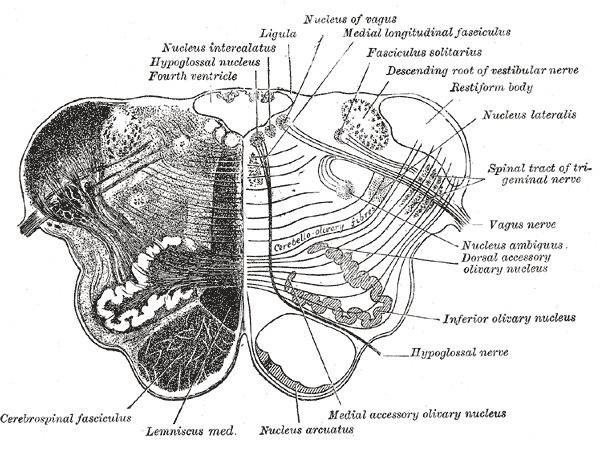NeuroNames hier-782 Dorlands/Elsevier t_15/12817166 FMA 72619 | NeuroLex ID Solitary tract TA A14.1.04.120 | |
 | ||
Latin tractus solitarius medullae oblongatae | ||
The solitary tract (Latin: tractus solitarius) is a compact fiber bundle that extends longitudinally through the posterolateral region of the medulla. The solitary tract is surrounded by the nucleus of the solitary tract, and descends to the upper cervical segments of the spinal cord.
Contents
Composition
The solitary tract is made up of primary sensory fibers and descending fibers of the vagus, glossopharyngeal, and facial nerves.
Function
The solitary tract conveys afferent information from stretch receptors and chemoreceptors in the walls of the cardiovascular, respiratory, and intestinal tracts. Afferent fibers from cranial nerves 7, 9 and 10 convey taste (SVA) in its rostral portion, and general visceral sense (GVA) in its caudal part. Taste buds in the mucosa of the tongue can also generate impulses in the rostral regions of the solitary tract. The efferent fibers are distributed to the solitary tract nucleus.
Synonyms
There are numerous synonyms for the solitary tract:
